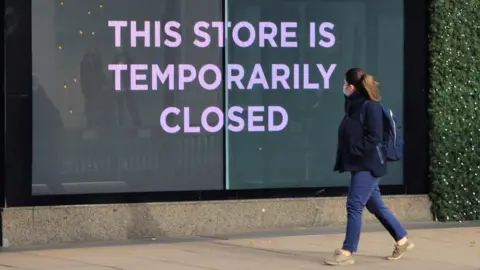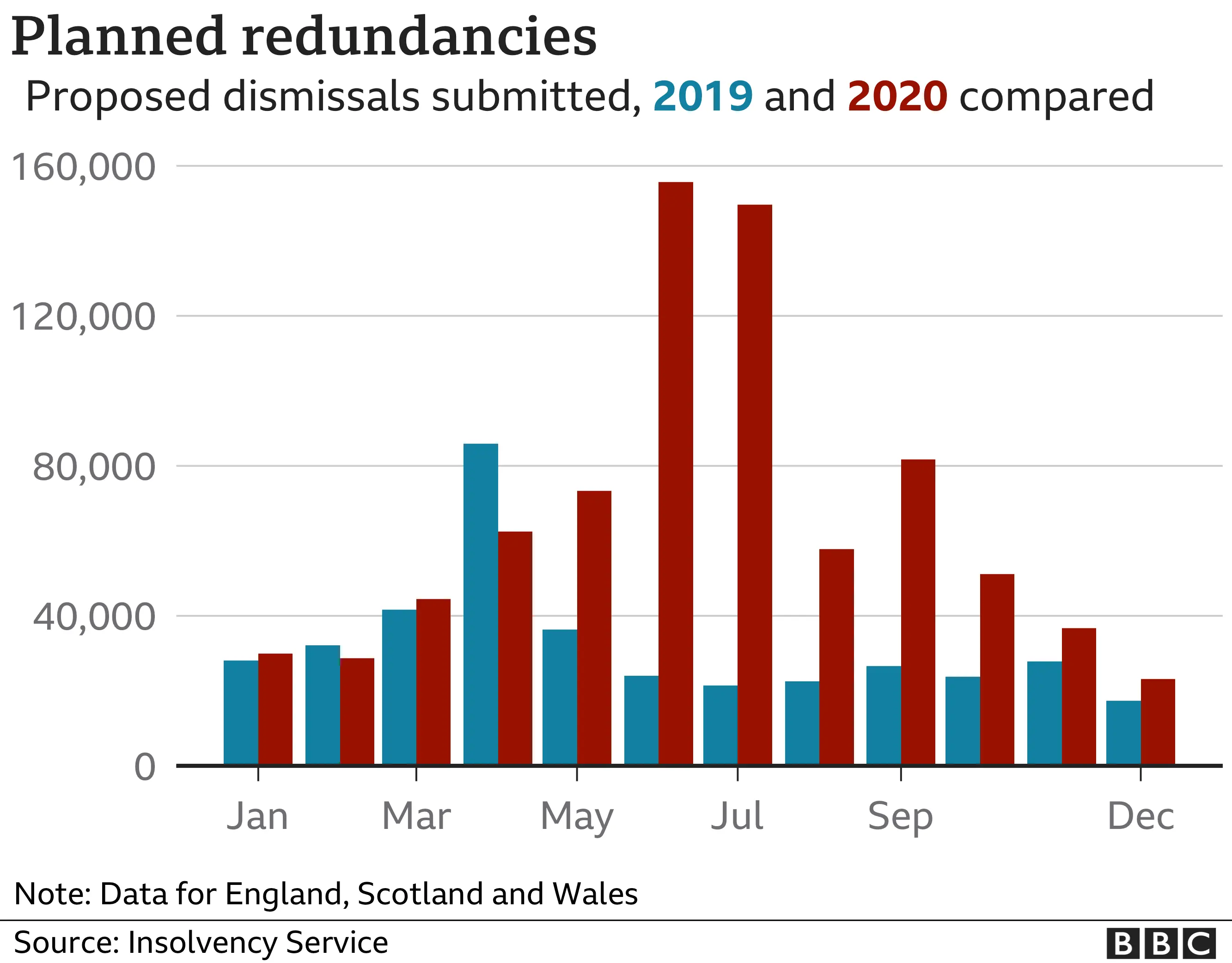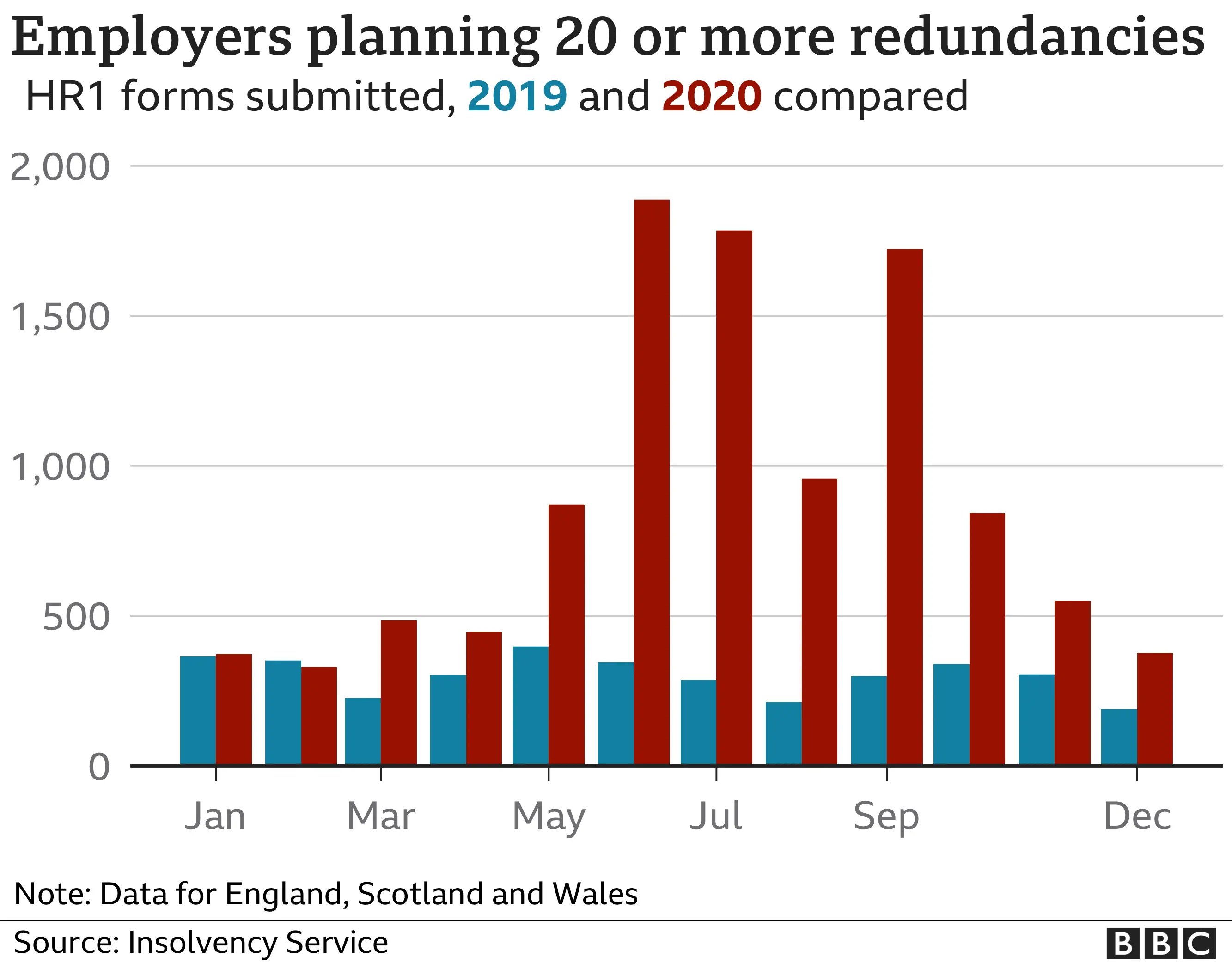Firms planned record 800,000 redundancies last year
 Getty Images
Getty ImagesBritish employers made plans to cut 795,000 jobs last year, a record number, as Covid lockdowns took their toll on the economy.
More than 10,000 firms planned job cuts, however the pace of planned cuts slowed at the end of the year.
Without the government's furlough scheme, designed to protect jobs, the numbers might have been higher still.
The figures were obtained in response to a BBC Freedom of Information request to the Insolvency Service.
Employers must notify the Insolvency Service when they plan to cut 20 or more jobs, giving an earlier indication of changes in the labour market than waiting for official joblessness statistics.

Large parts of the British economy were brought to a standstill for weeks on end during 2020 by the measures imposed to contain Covid-19, and many employers were forced to cut staff as a result.
The number of job cuts proposed through the year was well above the 530,000 seen the last time the UK was in recession, in 2010, and higher than any year in the records which go back to 2006.
However, in recent months the pace of layoffs has slowed, even though the new Covid variant has seen surging case numbers and new lockdowns imposed across the UK.
Last month employers notified government of plans to cut 23,100 job cuts, which is the lowest monthly figure for 2020, though still a third higher than December 2019.
The decision to extend the furlough scheme, where government pays most of a worker's wages if their employer can't, will have enabled more firms to keep their staff, believes Tony Wilson, Director of the Institute for Employment Studies.
"The question now though is where redundancy figures go next," he says.
"If they start to stabilise around these levels, then [job cuts] would be at least one third higher than what we've seen over most of the last decade, and it's possible that a combination of this lockdown and then furlough unwinding from May could see numbers creeping up."
Despite that, Mr Wilson sees the situation as "pretty positive".

Employers planning to cut 20 or more staff have to notify the Insolvency Service of their plans at the start of the process.
These notifications give an earlier indication of the state of the labour market than data published by the Office for National Statistics, which appear with a time lag of a few months.
Insolvency Service figures showed record levels in redundancies in June and July, which was confirmed when the ONS published its own figures three months later.
The latest figures, for the period from August to October, saw a new record of 370,000 redundancies across the UK.
As redundancy processes covering fewer than 20 workers aren't included, the total number of job cuts planned will be higher than the Insolvency Service totals.
But individual firms often make fewer cuts than the number they first propose to government.
Employers in Northern Ireland file HR1 forms with the Northern Ireland Statistics and Research Agency and they are not included in these figures.
